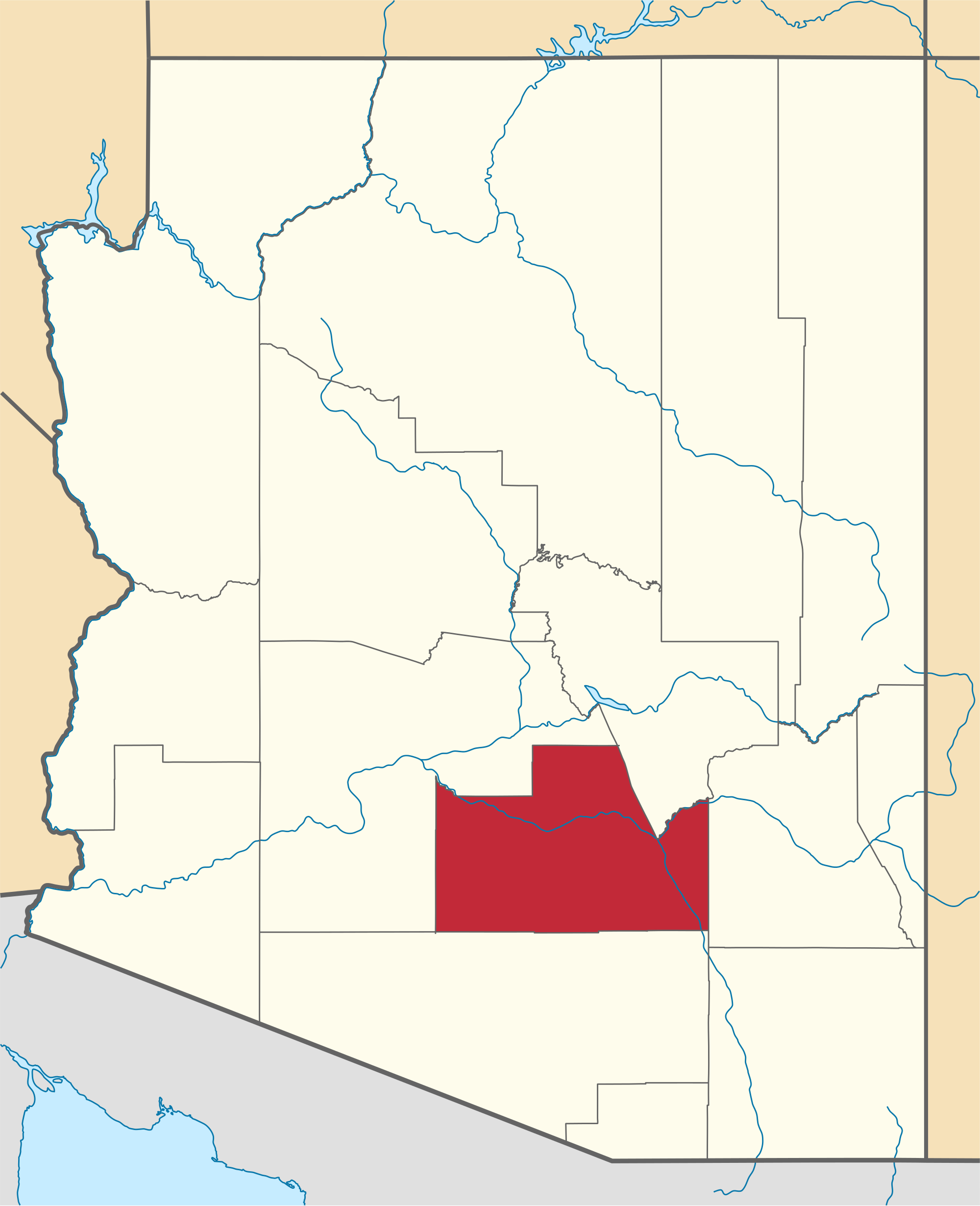 By David A. Schaller
By David A. Schaller
Tucked between the population centers of Maricopa County to the north and Pima County to the south, Pinal County was until recently an agricultural stronghold best known for its year-round harvest of cotton and other warm-weather crops. Cotton – the county’s most famous crop – has been grown in Arizona for two and a half millennia. Though planting acreage peaked in 1963 at over 600,000 acres, cotton still contributes some $300 million annually to the state’s economy. Much of the 200,000 acres remaining in production are grown on large plantations south and west of Eloy, the heart of Pinal County cotton country.
 While Eloy is known for agriculture and ranching, the largest city in Pinal County remains Casa Grande. In recent years, rapid population growth throughout the county has come to rival that of Phoenix and Tucson. With more than 400,000 people, Pinal County is now among the fastest growing counties in the U.S. Homes are being “planted” more than crops these days.
While Eloy is known for agriculture and ranching, the largest city in Pinal County remains Casa Grande. In recent years, rapid population growth throughout the county has come to rival that of Phoenix and Tucson. With more than 400,000 people, Pinal County is now among the fastest growing counties in the U.S. Homes are being “planted” more than crops these days.
When fields once covered with cotton are retired from farming, the open land is vulnerable to great dust storms. Some of these are miles long and thousands of feet high, able to choke interstate traffic and cover neighboring Maricopa County with blankets of sand. While these storms are triggered by natural weather events like summer monsoonal flows, they are only possible due to surface disturbances of a human nature brought about by fallowing of farmlands, plowing of active fields, and overpumping of groundwater.
Most of the time, discerning the effects of climate change is a matter of connecting the dots. More extreme rainfall translate into floods in areas already prone to such risks, while desiccated forests and rangelands are prime candidates for insect infestation and wildland fires. In Pinal County, connecting the dots requires no more than mapping tools and a walk in the desert.
Earlier this year, a massive, two-mile-long earth fissure opened up on state land outside of Eloy. This 30-foot deep crevasse continued a pattern of land rupture and subsidence in response to several decades’ worth of massive groundwater extraction to irrigate thirsty fields of cotton. About 70 miles of fissures have now opened in this area of Pinal County alone, according to the Arizona Geological Survey. The Survey adds that the Valley floor around Eloy has subsided as much as 20 feet in the past 50 to 60 years, while water tables once tens of feet from the surface are now hundreds of feet deep.
Currently, the prospects of extended drought across the county due to climate change, coupled with reductions in Central Arizona Project (CAP) allotments for agriculture, are driving a renewed dependence on groundwater for irrigated agriculture. Today’s earth fissures connect the dots between less reliable surface water from the CAP, aquifer overpumping, and regional subsidence. These are combining to limit options for business-as-usual agriculture in the county.
Even recharging aquifers with treated wastewater is largely off the table, as the state’s Water Agency says that too much damage has already been done. Soil compaction during subsidence now limits aquifer recharge, and subsidence will continue to expand the network of deep crevasses across the county. Says a state spokeswoman, the subsidence “is permanent and irreversible.”
Much of Pinal County’s groundwater savings account has been spent in a cotton boom lasting less than a century while CAP reinforcements may prove elusive. Going forward, every year that Pinal County residents can duck CAP cutbacks will buy the time needed to adapt to a new climate and economic reality. Every new fissure that opens in Pinal County will be one more dot connecting its current overconsumption of groundwater and its new climate and economic future.
For Green Living’s climate change series, each month we will focus on one of Arizona’s 15 counties and how climate change is affecting it specifically. Next month’s installment will focus on Santa Cruz County.
David A. Schaller is a retired environmental scientist living in Tucson where he writes on climate, water and energy security.
Read more environment articles at greenlivingaz.com/environment.







